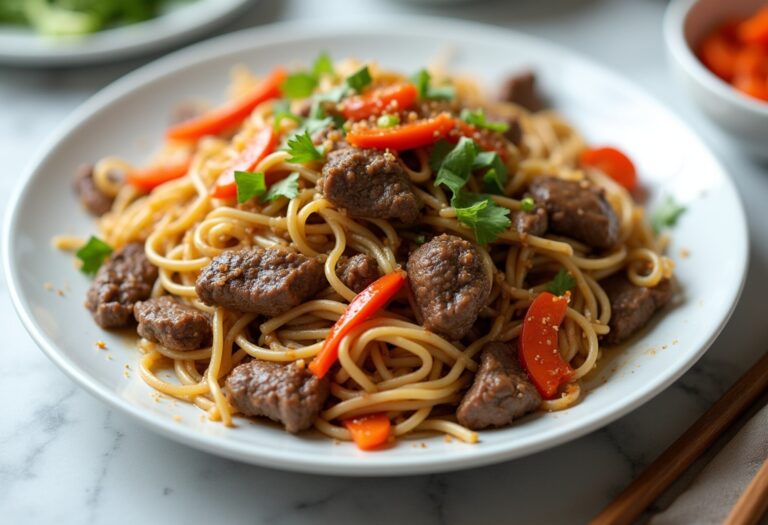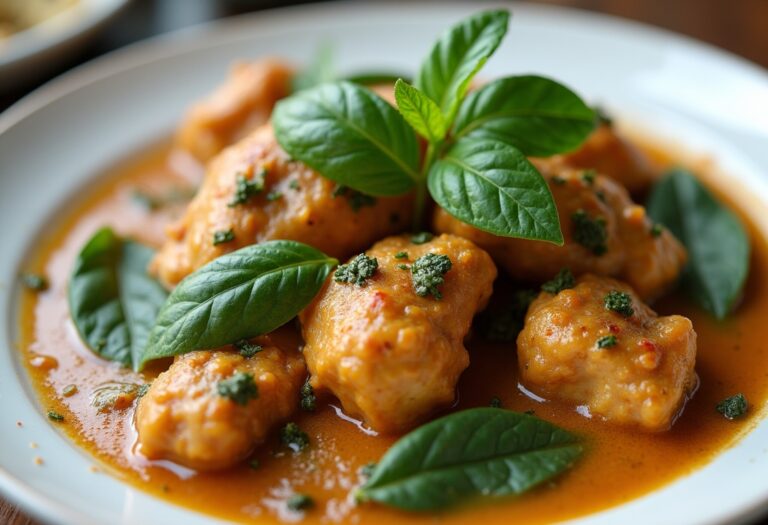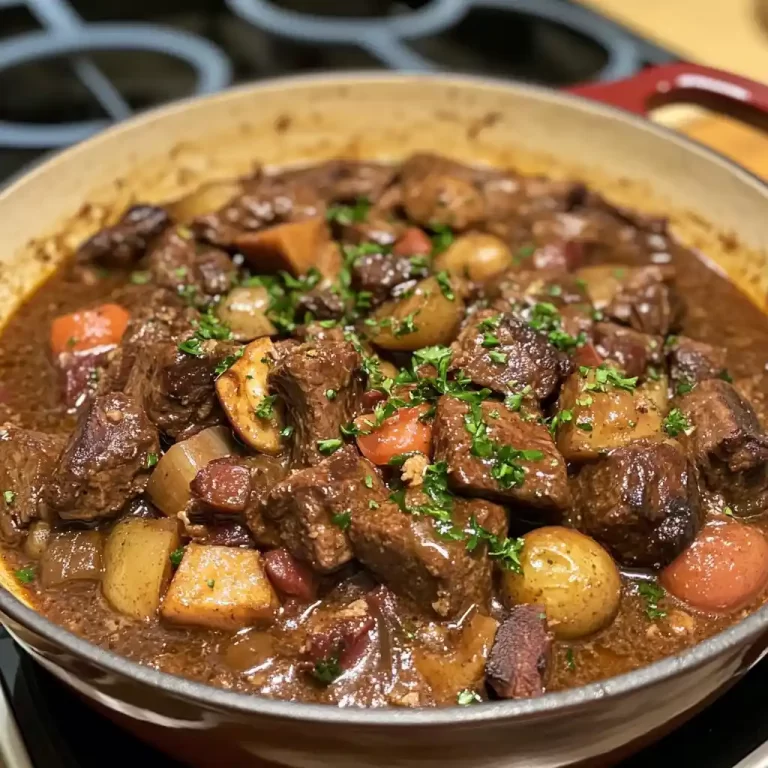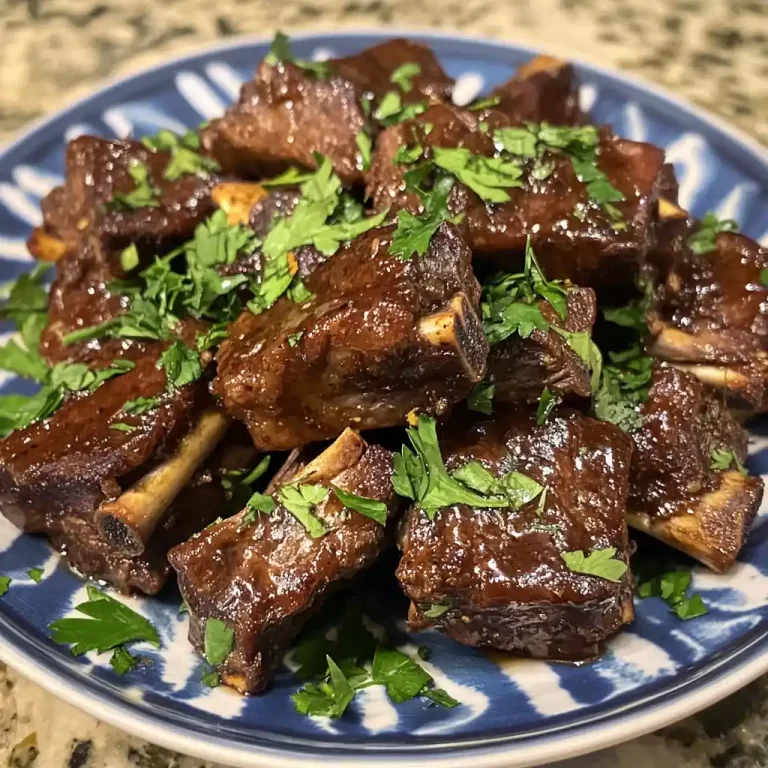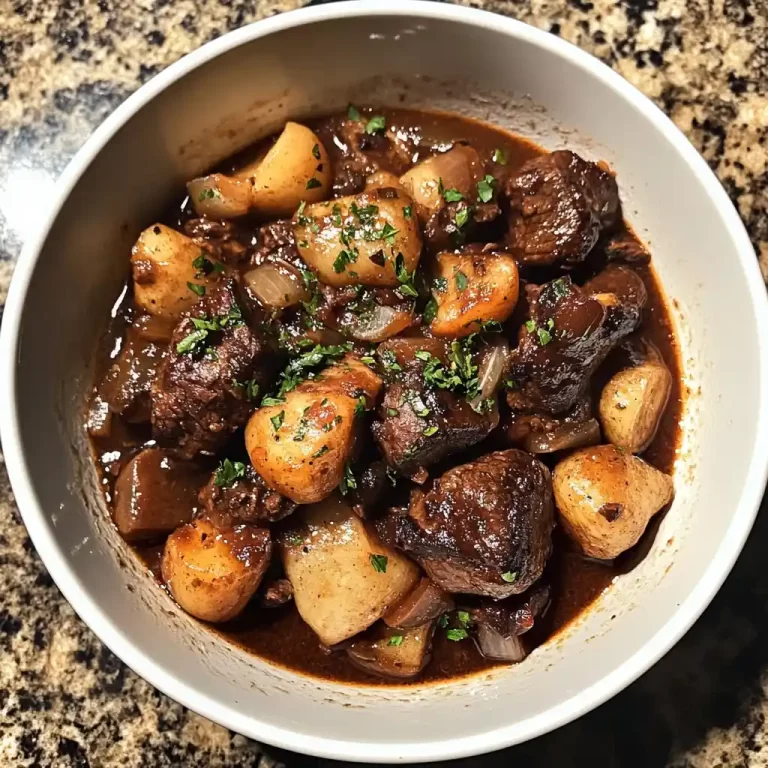Authentic Spanish Paella Recipe
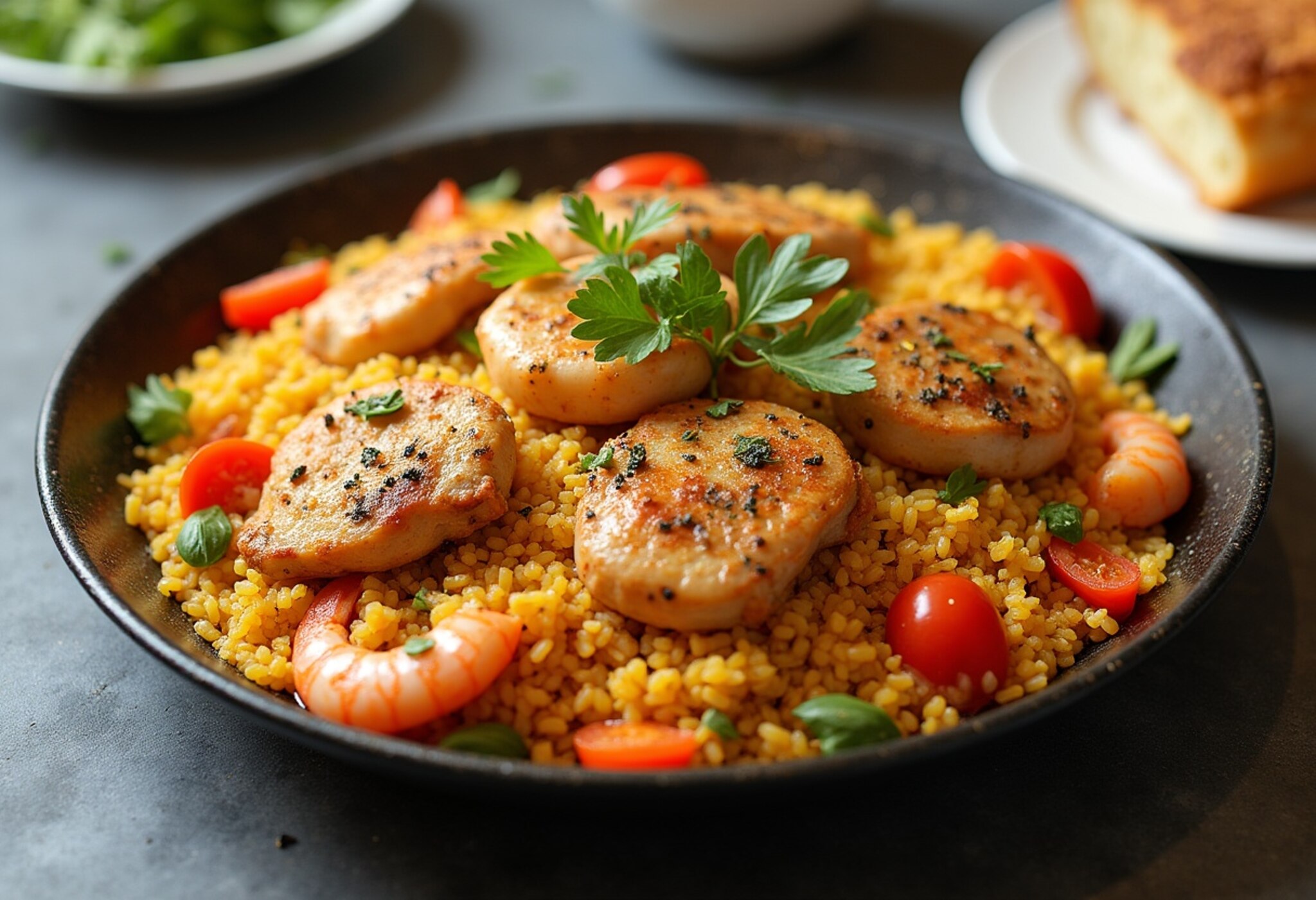
Paella, the iconic Spanish rice dish, is a culinary masterpiece that has captivated the hearts and taste buds of food enthusiasts worldwide. This vibrant, saffron-infused dish, with its perfectly cooked grains of rice, succulent proteins, and colorful array of vegetables, is a true celebration of Mediterranean flavors. Whether you’re an experienced home cook or just starting your culinary journey, mastering the art of paella is a rewarding experience that will transport you to the sun-drenched streets of Spain.
The beauty of paella lies in its simplicity and the way it brings people together. It’s a communal dish that encourages family and friends to gather around the table, share stories, and savor the depth of flavors that unfold with each bite. In this comprehensive guide, we’ll take you on a journey through the essential steps to creating an authentic, restaurant-quality paella in your own kitchen.
❤️ Why You’ll Love This Recipe ❓
Paella is a beloved dish that offers a unique combination of textures and flavors. The crispy, golden-brown rice at the bottom of the pan, known as the “socarrat,” is a highly prized feature that adds an irresistible crunch and caramelized essence to the dish. The tender seafood, juicy chicken, and vibrant vegetables work in harmony to create a medley of tastes that will leave your taste buds captivated.
Beyond its exceptional flavor, paella is also a remarkably accessible and versatile recipe. With a few simple adjustments, you can adapt it to suit various dietary preferences, from gluten-free and dairy-free to low-carb and vegetarian. Moreover, paella can be prepared in advance, making it an ideal choice for hosting gatherings or meal prepping throughout the week.
🛒 What You Need to Prepare Spanish Paella ❓
• 4 cups warm chicken or vegetable broth
• 1 teaspoon saffron threads
• 3 tablespoons extra-virgin olive oil
• 1 pound boneless, skinless chicken thighs, cut into 1-inch pieces
• 1 pound large shrimp, peeled and deveined
• 1 cup frozen peas
• 1 red bell pepper, sliced
• 1 medium onion, diced
• 3 cloves garlic, minced
• 1 teaspoon paprika
• 1 teaspoon dried oregano
• Salt and freshly ground black pepper, to taste
• Lemon wedges, for serving
The beauty of this Spanish paella is that most ingredients are pantry or freezer staples. The combination of short-grain rice, saffron, and a variety of proteins and vegetables creates the traditional Spanish-inspired flavor profile that has made paella recipes perennially popular.
📝 How to Make Spanish Paella Step-by-Step ❓
• Step 2: Heat the olive oil in a large, shallow paella pan or a wide, shallow skillet over medium-high heat. Add the chicken and cook until browned on all sides, about 5-7 minutes. Remove the chicken from the pan and set aside.
• Step 3: In the same pan, add the onion and bell pepper. Cook for 3-4 minutes, stirring occasionally, until the vegetables are softened.
• Step 4: Stir in the garlic, paprika, and oregano. Cook for 1 minute, until fragrant.
• Step 5: Add the rice to the pan and stir to coat the grains with the oil and spices. Cook for 2-3 minutes, stirring frequently, until the rice is slightly translucent.
• Step 6: Pour in the saffron-infused broth and the remaining 3 3/4 cups of warm broth. Bring the mixture to a boil, then reduce the heat to medium-low and let it simmer, undisturbed, for 15 minutes.
• Step 7: Arrange the cooked chicken, shrimp, and peas evenly over the rice. Cover the pan with a lid or foil and continue to cook for 10 more minutes, or until the rice is tender and the liquid is absorbed.
• Step 8: Remove the lid and let the paella rest for 5-10 minutes to allow the “socarrat” (crispy rice) to form on the bottom of the pan.
• Step 9: Serve the paella immediately, garnished with lemon wedges.
⏱️ Timing Overview
• Cooking time: 30 minutes
• Total time: 50 minutes
Compared to traditional paella recipes that can take up to an hour to prepare, this Spanish paella saves you 20% of your cooking time while delivering similar flavors.
👩🏻⚕️ Nutritional Information
Per serving (based on 6 servings):
• Protein: 29g
• Carbohydrates: 54g
• Fat: 13g
• Fiber: 4g
• Sodium: 634mg
These paella dishes provide approximately 55% of your daily protein requirements and 16% of your daily carbohydrate needs, making them not just delicious but nutritionally valuable as well.
🔄 Healthier Alternatives for the Recipe
• Lower-carb version: Substitute half the rice with riced cauliflower or zucchini noodles.
• Dairy-free adaptation: Omit the butter and use olive oil or a dairy-free butter substitute.
• Added protein: Increase the amount of chicken and shrimp, or add cooked chorizo or diced ham.
• Boost vegetables: Incorporate additional vegetables like diced tomatoes, green beans, or artichoke hearts.
These modifications can reduce calories by up to 20% or adapt the recipe for specific dietary needs without compromising the fundamental flavor profile of the Spanish paella.
🍽️ Serving Suggestions
• Pair with a chilled Spanish white wine or a refreshing sangria for an authentic dining experience.
• Complement the paella with a simple green salad or a crisp, vegetable-based soup for a balanced and satisfying meal.
• For a tapas-style gathering, serve the paella alongside a selection of Spanish-inspired appetizers like marinated olives, roasted red peppers, and manchego cheese.
• Create a vibrant, Instagram-worthy paella platter by arranging the dish on a large serving plate and garnishing it with lemon wedges, fresh parsley, and a drizzle of high-quality olive oil.
❌ Common Mistakes to Avoid
• Stirring the rice: Paella is meant to be cooked without disturbing the rice, as this can break up the grains and prevent the formation of the prized socarrat.
• Rushing the cooking process: Paella requires patience and gentle simmering to allow the rice to absorb the flavorful broth and develop its signature texture.
• Using the wrong type of rice: Short-grain Spanish rice, such as Bomba or Calasparra, is essential for achieving the creamy, al dente texture of authentic paella. Avoid using long-grain or risotto rice, as they will not produce the same results.
• Forgetting the saffron: Saffron is a critical ingredient in paella, adding its distinctive aroma and vibrant color to the dish. Don’t skip this essential spice.
🧊 Storing Tips for the Recipe
These Spanish paella dishes retain their quality remarkably well:
• Freezing unbaked: Prepare the paella up to the point of adding the seafood and vegetables. Allow it to cool completely, then transfer to a freezer-safe container or resealable bag. Freeze for up to 3 months. When ready to serve, thaw in the refrigerator overnight and continue with the remaining cooking steps.
• Freezing baked: Allow the cooked paella to cool completely, then wrap tightly in plastic wrap or aluminum foil. Freeze for up to 3 months. To reheat, thaw in the refrigerator overnight and then bake at 375°F for 20-25 minutes, or until heated through.
• Reheating: For best results, reheat paella in a skillet or paella pan over medium heat, adding a splash of broth or water to restore the rice’s texture and prevent drying.
❓ FAQs
Can I make paella ahead of time?
Yes, paella can be prepared in advance. For the best results, follow the recipe up to the point of adding the seafood and vegetables. Allow the partially cooked rice to cool completely, then transfer it to an airtight container and refrigerate for up to 3 days. When ready to serve, simply reheat the paella in a skillet, add the seafood and vegetables, and continue cooking until heated through and the seafood is cooked.
Can I substitute the protein in this paella recipe?
Absolutely! Paella is a very versatile dish that can be adapted to suit your preferences or what you have on hand. You can substitute the chicken with other proteins like chorizo, diced ham, or even plant-based options like tofu or chickpeas. For the seafood, you can use a mix of shrimp, mussels, clams, or any white fish that you enjoy.
How can I make this paella recipe healthier?
To make a healthier version of this paella, you can use low-sodium broth, opt for boneless, skinless chicken breasts instead of thighs, and increase the proportion of vegetables. You can also replace some of the rice with riced cauliflower or zucchini noodles to reduce the carbohydrate content. For a dairy-free adaptation, use olive oil instead of butter and omit any cheese.
What if my paella turns out mushy or undercooked?
If your paella turns out mushy, it’s likely due to overcrowding the pan or not allowing the rice to simmer undisturbed. Make sure to use the proper pan size and resist the urge to stir the rice during cooking. If the rice is undercooked, simply cover the pan and continue simmering for a few more minutes until the grains are tender. Adjust the heat as needed to prevent burning.
Can I add additional ingredients to this paella recipe?
Absolutely! Paella is a very versatile dish that allows for endless variations. You can add diced tomatoes, green beans, artichoke hearts, or even sliced mushrooms to the mix. For a more robust flavor, you can also incorporate crumbled chorizo or diced Serrano ham. Just be mindful not to overcrowd the pan and to adjust the cooking time as needed to accommodate the additional ingredients.
Conclusion
These authentic Spanish paella dishes represent the perfect balance of convenience, flavor, and presentation. Whether you’re serving them as a showstopping main course or as part of a vibrant tapas spread, they’re sure to impress with their vibrant colors, tender textures, and captivating aroma. The versatility of this recipe allows for countless variations to suit your taste preferences and dietary needs.
With simple ingredients and straightforward preparation, these paella dishes demonstrate that sophisticated flavors don’t require complicated techniques – just quality ingredients and a little bit of care in the cooking process. So, gather your friends and family, pour a glass of Spanish wine, and let the magic of paella transport you to the sun-drenched landscapes of the Iberian Peninsula.
Print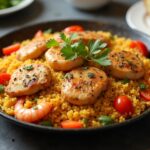
Authentic Spanish Paella Recipe
- Total Time: 50 minutes
Ingredients
• 2 cups short-grain Spanish rice (such as Bomba or Calasparra)
• 4 cups warm chicken or vegetable broth
• 1 teaspoon saffron threads
• 3 tablespoons extra-virgin olive oil
• 1 pound boneless, skinless chicken thighs, cut into 1-inch pieces
• 1 pound large shrimp, peeled and deveined
• 1 cup frozen peas
• 1 red bell pepper, sliced
• 1 medium onion, diced
• 3 cloves garlic, minced
• 1 teaspoon paprika
• 1 teaspoon dried oregano
• Salt and freshly ground black pepper, to taste
• Lemon wedges, for serving
Instructions
• Step 1: In a small bowl, combine the saffron threads and 1/4 cup of the warm broth. Let it steep for 10 minutes to infuse the broth with the saffron’s vibrant color and flavor.
• Step 2: Heat the olive oil in a large, shallow paella pan or a wide, shallow skillet over medium-high heat. Add the chicken and cook until browned on all sides, about 5-7 minutes. Remove the chicken from the pan and set aside.
• Step 3: In the same pan, add the onion and bell pepper. Cook for 3-4 minutes, stirring occasionally, until the vegetables are softened.
• Step 4: Stir in the garlic, paprika, and oregano. Cook for 1 minute, until fragrant.
• Step 5: Add the rice to the pan and stir to coat the grains with the oil and spices. Cook for 2-3 minutes, stirring frequently, until the rice is slightly translucent.
• Step 6: Pour in the saffron-infused broth and the remaining 3 3/4 cups of warm broth. Bring the mixture to a boil, then reduce the heat to medium-low and let it simmer, undisturbed, for 15 minutes.
• Step 7: Arrange the cooked chicken, shrimp, and peas evenly over the rice. Cover the pan with a lid or foil and continue to cook for 10 more minutes, or until the rice is tender and the liquid is absorbed.
• Step 8: Remove the lid and let the paella rest for 5-10 minutes to allow the “socarrat” (crispy rice) to form on the bottom of the pan.
• Step 9: Serve the paella immediately, garnished with lemon wedges.
- Prep Time: 20 minutes
- Cook Time: 30 minutes
- Category: Dinner
- Cuisine: Americans
Keywords: Authentic Spanish Paella Recipe

